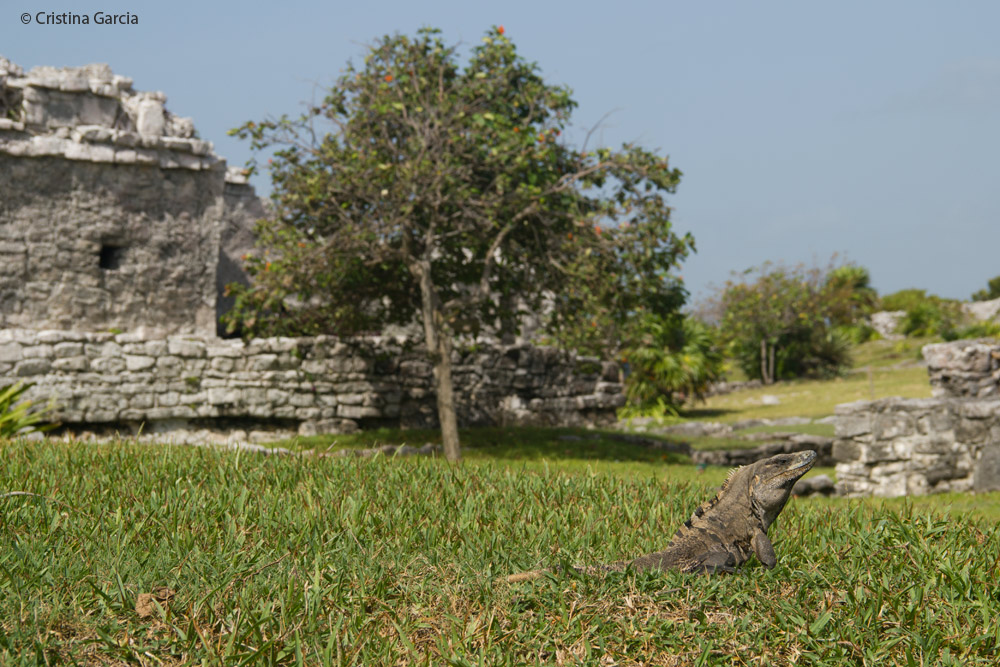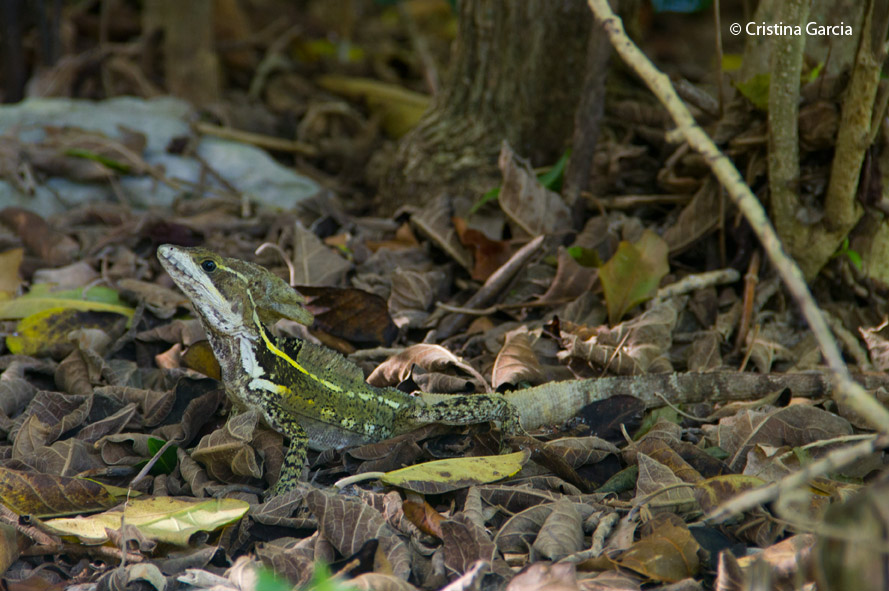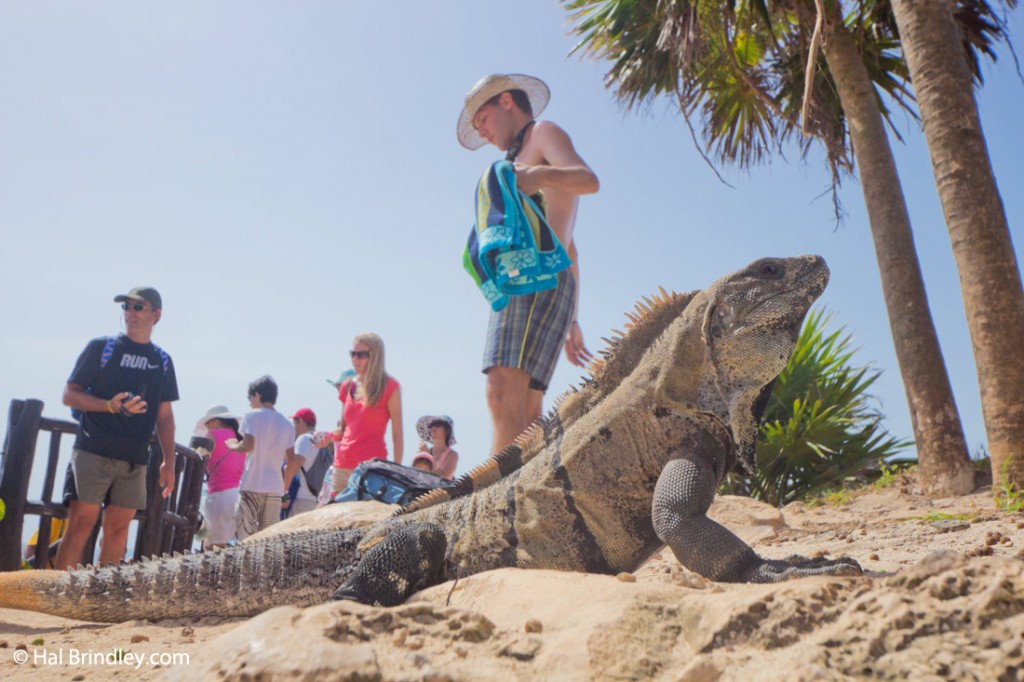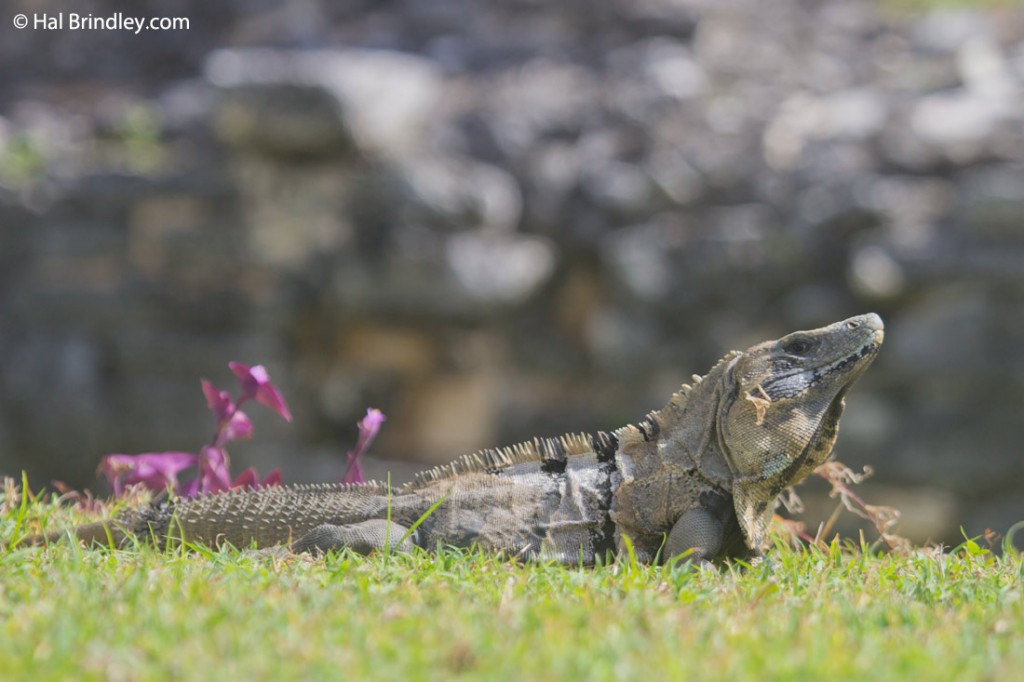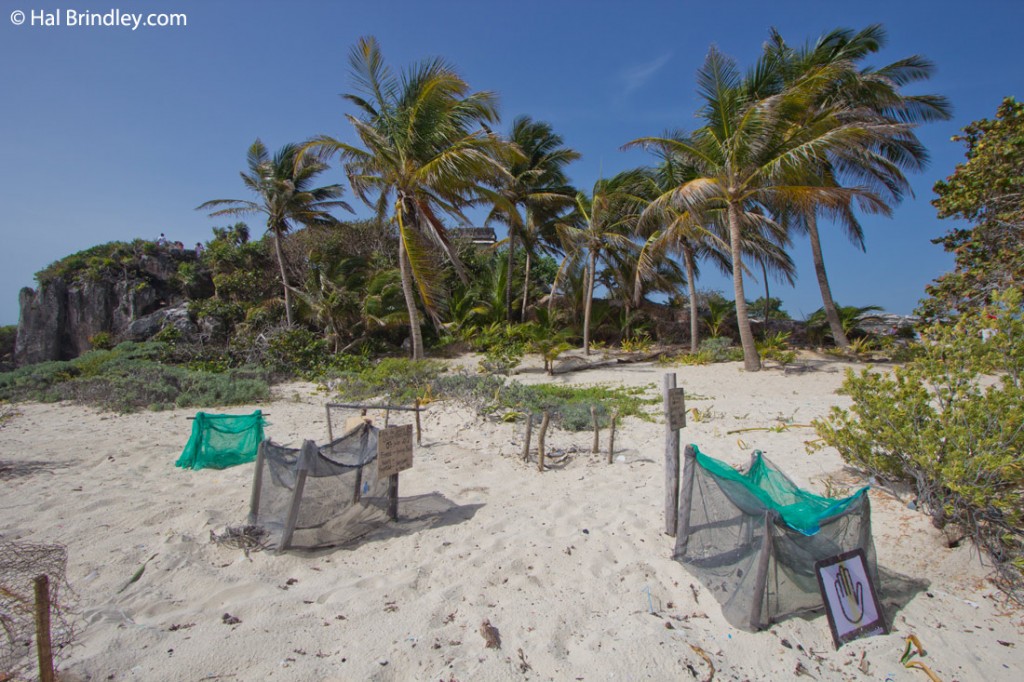Last August we went on a wildlife tour in the Yucatan Peninsula of Mexico. We swam with whale sharks in Holbox Island and then we visited the Sian Ka’an Biosphere Reserve before driving to Calakmul Biosphere Reserve in an attempt to see a jaguar (highly unlikely, but I was hopeful).
One day while at Sian Ka’an, we decided to do something we don’t normally do: visit a tourist attraction where we didn’t expect to see any wildlife, the Tulum Maya Ruins. Then we could get our wildlife fix later in the day by swimming with sea turtles in the nearby town of Akumal.
We arrived early morning and the Tulum Maya ruins were already packed with visitors, but more surprisingly, it was also packed with dragons. Well not dragons technically, just really big lizards.
The star of the show, the Jesus Christ Lizard
The Jesus Christ lizard? I never thought I would see this one. Its name comes from the ability to run on top of water. Surely you must have seen slow motion footage of these guys running across the water on their back legs while they paddle the air comically with their front feet. Their more familiar name is the Basilisk, and the particular species we ran into while walking toward the Maya ruins was the Common Basilisk (Basiliscus basiliscus).
Its bright yellow stripes and white cheeks caught our eye against the brownish leaf litter. Males, like the one in the photo, have a distinctive head crest which they use to impress females. The bright yellow stripes on the side will fade out as it grows old.
I just wish we had seen him do his thing: walking on water.
The King of Tulum: the Ctenosaur
The first thing that will strike you when you visit Tulum is the number of tourists. We went first thing in the morning to avoid the crowds and the heat, but both were already unbearable. The second thing will be the incredible number of Ctenosaurs walking around. They generally ignore the tourists, graze on grasses and try to blend in with the ancient ruins while soaking up some sun.
Ctenosaurs are also known as spiny-tail iguanas, because of the spiny scales on their swollen tails. I didn’t notice this feature until later on when I looked at our photos. These iguanas are everywhere. They are resting on the rocks, on top of the ruins, peeking out of ancient windows and walking around next to the tourists. They are quite tolerant of people and will go about their business if given their space.
They are omnivorous with a diet ranging from fruits and grass to insects. This is one of the reasons why there are so many in Tulum. There is no shortage of grass. It is difficult to imagine how Tulum looked when the Mayas inhabited this place but it is unlikely they had the well-manicured lawns of today.
Other Wildlife at Tulum Maya Ruins
The beach at Tulum ruins is protected and closed to tourists during sea turtle nesting season. When we visited, there were many sea turtle nests and it was forbidden to walk on the beach. Furthermore, each nest had a net around it for protection, a sign with the name of the species who laid the eggs, and the date.
In a matter of weeks, baby sea turtles will start to crawl out of these nests and make their fist journey to the sea. In fact, five days after our visit to the ruins, we had the good fortune to witness this amazing wildlife spectacle on a beach three miles south of Tulum. It was an incredible experience that we were able to record on video.
If you enjoyed our Dragons of Tulum article you may also like:
- Photo of the Week: Chameleon in Kruger
- VIDEO: Baby turtles swimming to sea for the first time
- Photo of the Week: Green sea turtle grazing in Akumal Bay, Mexico

Cristina Garcia
Zoologist and wildlife photographer. She has worked in the field with jackals, wolves, cheetahs, & leopards. She serves on the Board of Directors of SEE Turtles, a non-profit sea turtle conservation organization.
Read her posts at Travel For Wildlife and see more of her work at Truly Wild, & Our Wild Yard.

